I day-tripped westward yesterday to a few locations in San Luis Obispo County (North of Santa Barbara and South of Monterrey) in what was likely my last coastal botany trip of the year. The trip was a bit of a mixed bag, as I couldn’t locate a few of my target flowers. I did, however, find the plant I most wanted to meet–the bizarre Calochortus obispoensis (San Luis Mariposa Lily, Liliaceae). This plant only grows on dry, rocky serpentine hillsides around the city of San Luis Obispo. Its habitat and bizarre appearance reminds me a bit of Calochortus tiburonensis (the Ring Montain Mariposa Lily) found in the North Bay last year (see post from May 25 of last year), but apparently it’s not that closely related within the genus. I guess serpentine just brings out the crazy in these plants.
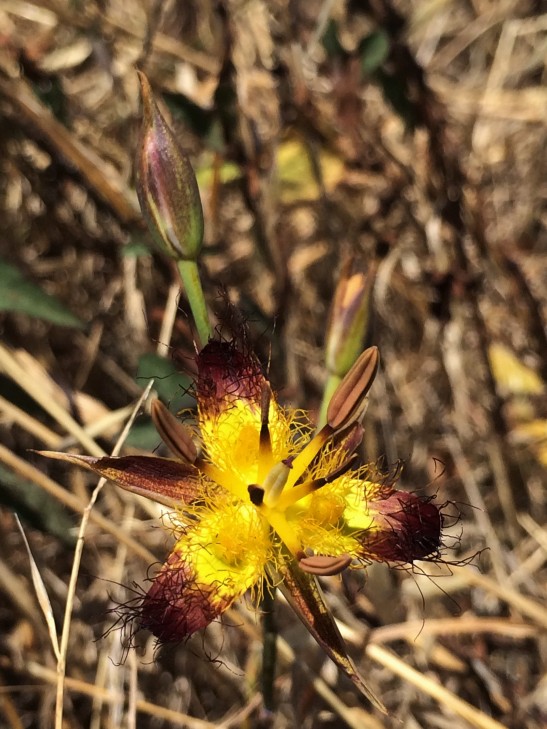
A few more late season plants were hanging out on the same serpentine hillside, an uncommon congener, Calochortus argillosus (Clay-loving Mariposa Lily)
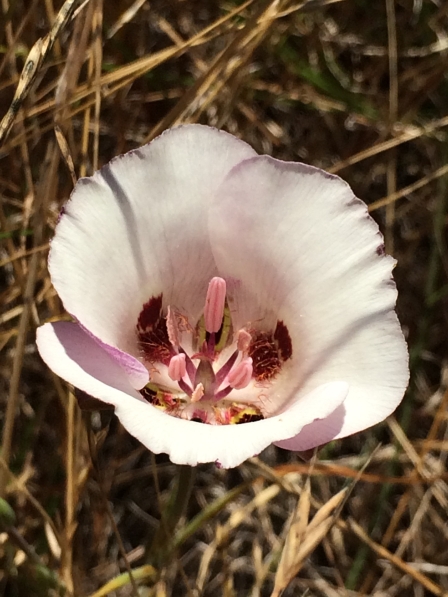
and the rare Dudleya abramsii murina (San Luis Obispo Liveforever, Crassulaceae)
I also visited the immediate coast south of Morro Bay, for some sand dunes botany. Highlights here included Abronia maritima (Red Sand Verbena, Nytaginaceae)
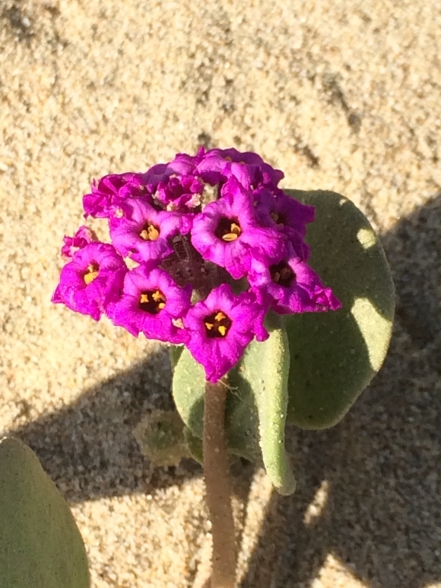
Chorizanthe angustifolia (Narrow-leaf Spineflower, Polygonaceae)
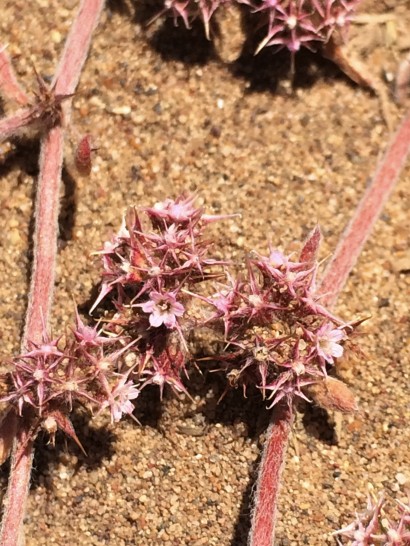
and Monardella sinuata (Curly-leafed Coyote Mint Lamiaceae). This last plant is not to be confused with one I posted a couple months ago, Monardella undulata (Wavy-leafed Coyote Mint, Lamiaceae), which is also a rare mint from the dunes of the South-Central Coast. The biggest difference is that this guy is an annual, while M. undulata is perennial. It seems crazy that in a genus of straight-leafed plants, two different species went curvy in the same area, but I guess that’s what happened!
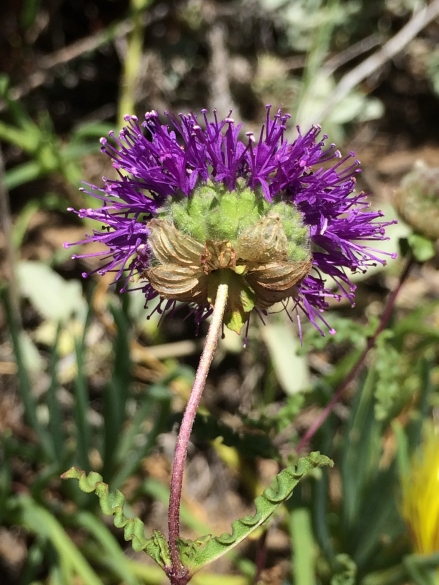
I spent most of the late afternoon and early evening trying to chase down a couple showy inland rarities without success. I did get a couple tiny rewards for my efforts, rare plants with flowers only a couple millimeters wide. First, here’s another spineflower, Chorizanthe breweri (San Luis Obispo Spineflower, Polygonaceae). Spineflowers often form large carpets of plants in flat, somewhat disturbed areas. Therefore, so despite their miniature stature, they can be fairly easy to find. Their nifty, spine-tipped bracts and six-part flowers can only be appreciated at very close range, however.

Finally, here’s Nemacladus secundiflorus (One-sided Threadplant, Campanulaceae). Plants in this genus also can occur in large patches. However, their thread-like stems make them almost impossible to see. I’ve only ever found them when crouched down looking at other plants.




On the yellow/blackish/brown flower in the first picture, what are the hairlike structures on the petals? Great pictures by the way 😀
LikeLike
They are trichomes–single-celled outgrowths of the epidermal tissue that can be found on any part of the shoot (but more often on the stem or leaf than the petals!). A bunch of species in this genus (Calochortus) have “hairy” petals and I’m not sure that anyone knows why. It might have some function for keeping unwanted floral visitors away or ensuring pollen ends up on the right spot on a pollinator. It would be a really cool experiment to remove the hairs on some flowers and see what effect that has on pollinator visitation or seed set. You definitely couldn’t do it with this species, however, as it’s endangered.
LikeLike
Great pictures Tim. Calochortus obispoensis caught my eye as I’m growing this species here in the UK from seed bought over 20 years ago. It does well under glass and also produces lots of seed, but only if hand-pollinated. It fascinates me and is on my (long) list of species I’d like to illustrate. Calochortus amabilis is still with me after all this time too.
LikeLike
Tim, do you have any other photos of the Nemacladus secundiflorus? There are some structures inside the flower in the second image that I can’t figure out–yellowish, looking like they radiate within the corolla. Don’t look like the hairs on the anthers or the cells on the filaments although they could be the latter.
LikeLike
Hi Nancy,
Unfortunately I don’t have any other photos, but the yellow is just markings on the corolla, which your key says is typical for this variety. The inner corolla was quite hairy as well as the filaments, but all the hairs were white. This photo was from the west side of highway 229 (Webster Road) about a mile north of highway 58 on a gravelly road cut (35.428424, -120.547178).
~Tim
LikeLike